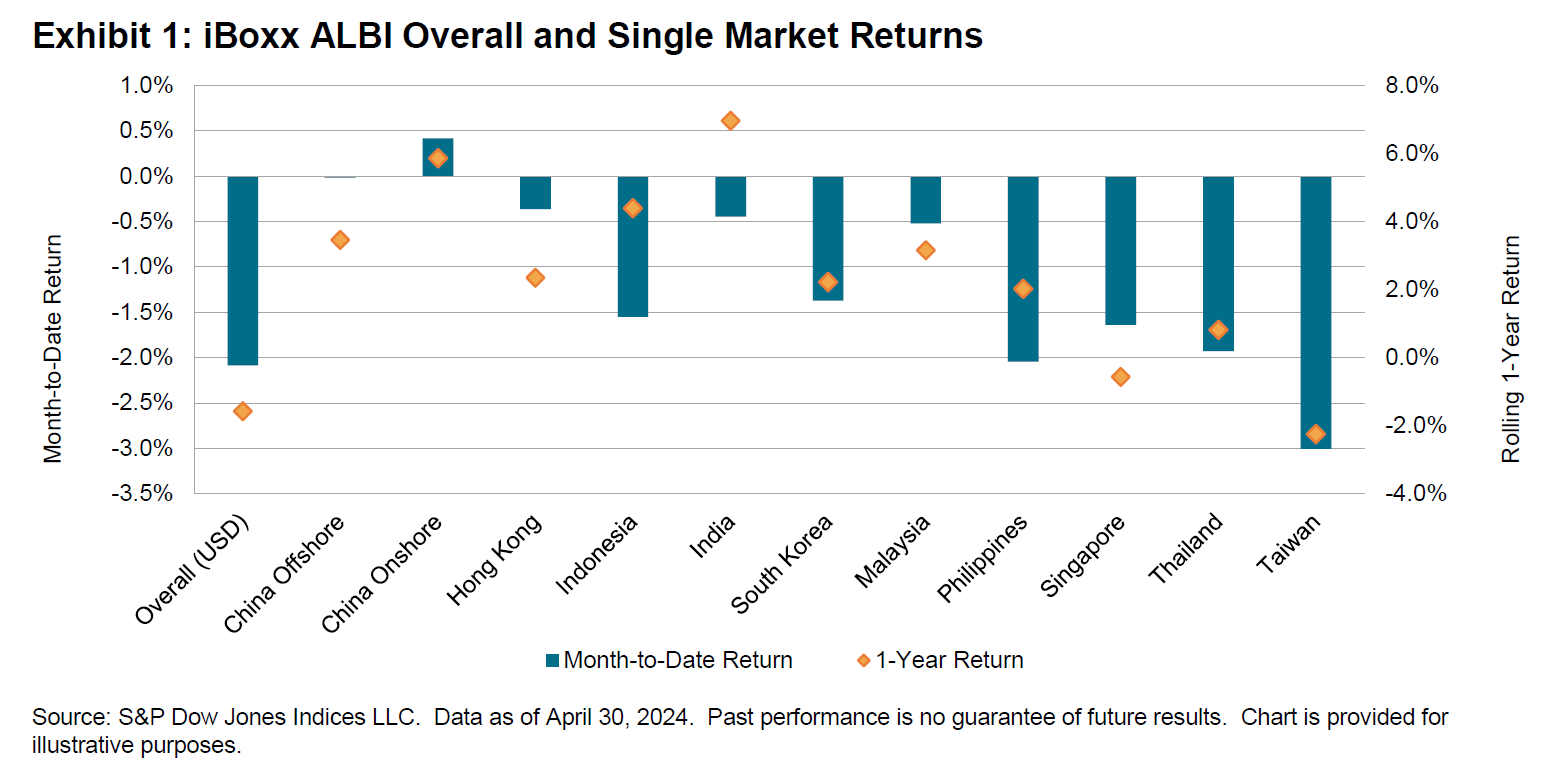The S&P Kensho New Economy Indices seek to track the industries and innovation of the Fourth Industrial Revolution
The global equity markets continued their rally in Q1 2024, with the
S&P Global BMI posting 7.8% quarterly gains and reaching a new
record high. The performance breadth was healthy, with 38 of the 47
countries represented contributing positively to the quarterly gains.
Among the major economies, Japan (S&P/TOPIX 150, 20.4%) was a
notable outperformer, while China (S&P China 500, 1.1%) stabilized
after reaching a five-year low in the previous quarter. The U.S.
equities-focused S&P Composite 1500® had a strong start to the year,
up 10.3%, with healthy contributions from large caps (up 10.6%) and
mid caps (up 10%), but notable weakness from the small caps (up
2.5%).
Within the S&P 500®, the rate-sensitive Real Estate sector, the top
performer in Q4 2023, was the only negatively performing sector
(down 0.6%). Financials (up 12.5%) was a strong sector performer
of this quarter, slightly lower than the top performing Energy sector
(up 13.6%). More importantly, 86% of the index constituents moved
above their 200-day moving average, signaling an improvement in
the performance breadth. Overall equity fund flows were robust this
quarter, accompanied by pickup in Energy sector inflows. Most S&P
500 factors posted positive quarterly returns, with momentum (up
22.6% for the quarter) taking the top spot (five of the Magnificent
Seven stocks make up 44% of the index weight), significantly
outperforming the S&P 500 over the past 12 months (up 49%). The
low volatility factor (up 5.8%) was at the bottom of the first quarter
factors league table. Positive quarterly returns were posted by 17 of
the 25 New Economies subsectors, led by Smart Borders (up 15.7%) and Nanotechnology (up 10.5%), which outperformed the S&P Composite 1500. The Financials-related New Economies sector of Democratized Banking (up 5%) was among the top-performing sectors. In contrast, buffeted by higher rates and weaker sentiment, the renewables-focused Clean Power sector (-9.6%) was the biggest underperformer. Outside of the New Economies, artificial intelligence-themed indices—S&P Kensho Artificial Intelligence Enablers Index (up 14.2%), S&P Kensho Global Artificial Intelligence Enablers Index (up 12.2%), S&P Kensho Artificial Intelligence Enablers & Adopters Index (up 17%)—were strong performers, boosted from sustained investor optimism around these technologies.
Sign up to receive updates via email
Sign Up
Backward-looking macro data indicators confirmed the market’s steady optimism on the U.S. economy. Q4 2023 U.S. corporate earnings materially beat expectations, though they were set lower going into the earnings season. The U.S. economy grew by 3.3%, versus the 2% projected for Q4 2023, with The Conference Board’s Leading Economic Indicator inching higher in February. Consumer spending underpinned a robust U.S. economy, buoyed by strong jobs data and wages. Nonetheless, consumer sentiment has been stagnant in the past six months. Inflation prints continued to dictate the Fed and market’s expectations of rate cuts, which were pushed further back this quarter. Higher than expected CPI prints in January and February quickly prompted the market to reprice the expected Fed rate cuts in 2024 from six to about three. The Fed, which also dealt with sticky inflation in the 1970s, has maintained a cautiously optimistic stance for rate cuts this year. Outside of the U.S., inflation has also risen across the globe so far this year.
Persistent inflation drove the rise of U.S. Treasury yields over the quarter, reversing the previous quarter’s course. The 2-10 Year U.S. Treasury curve spread moved sideways, extending its stay in the negative territory to more than 18 months. The iBoxx USD Treasuries Index’s recovery from the previous quarter was short lived, as it fell in Q1 2024 (by 1.00%), as did the S&P Eurozone Sovereign Bond Index (-0.42%). Expectations shifted in the past three months, with the European Central Bank (ECB) indicating that it’s open to rate cuts in the summer, even as the market’s Fed rate cut expectations in June have been scaled back. The S&P U.S. Treasury Bill Index (1.28%) managed to eke out a positive performance, while relatively lower duration and easing financial conditions aided the iBoxx USD Liquid Leveraged Loans (2.18%) and iBoxx USD Liquid High Yield (1.30%) outperformances versus the iBoxx USD Liquid Investment Grade (-0.72%).
The commodities (S&P GSCI) space was a spirited partner to equities, gaining 10.4% during the quarter. Crude oil was the primary driver as it steadily retraced nearly all its Q4 2023 losses in its march toward USD 90. Natural gas (down 21.3%) was a notable underperformer within the Energy sector, touching a decade-low from oversupply and seasonally low available storage capacity. Despite rising U.S. real yields, increasing central bank purchases bolstered gold (7.0%) to new record highs, with silver prices (3.8%) also moving higher. Industrial Metals (0.3%), along with Agriculture commodities (0.9%), barely moved. Global manufacturing PMI rose for two consecutive months in February and turned positive this quarter for the first time since August 2022.















































